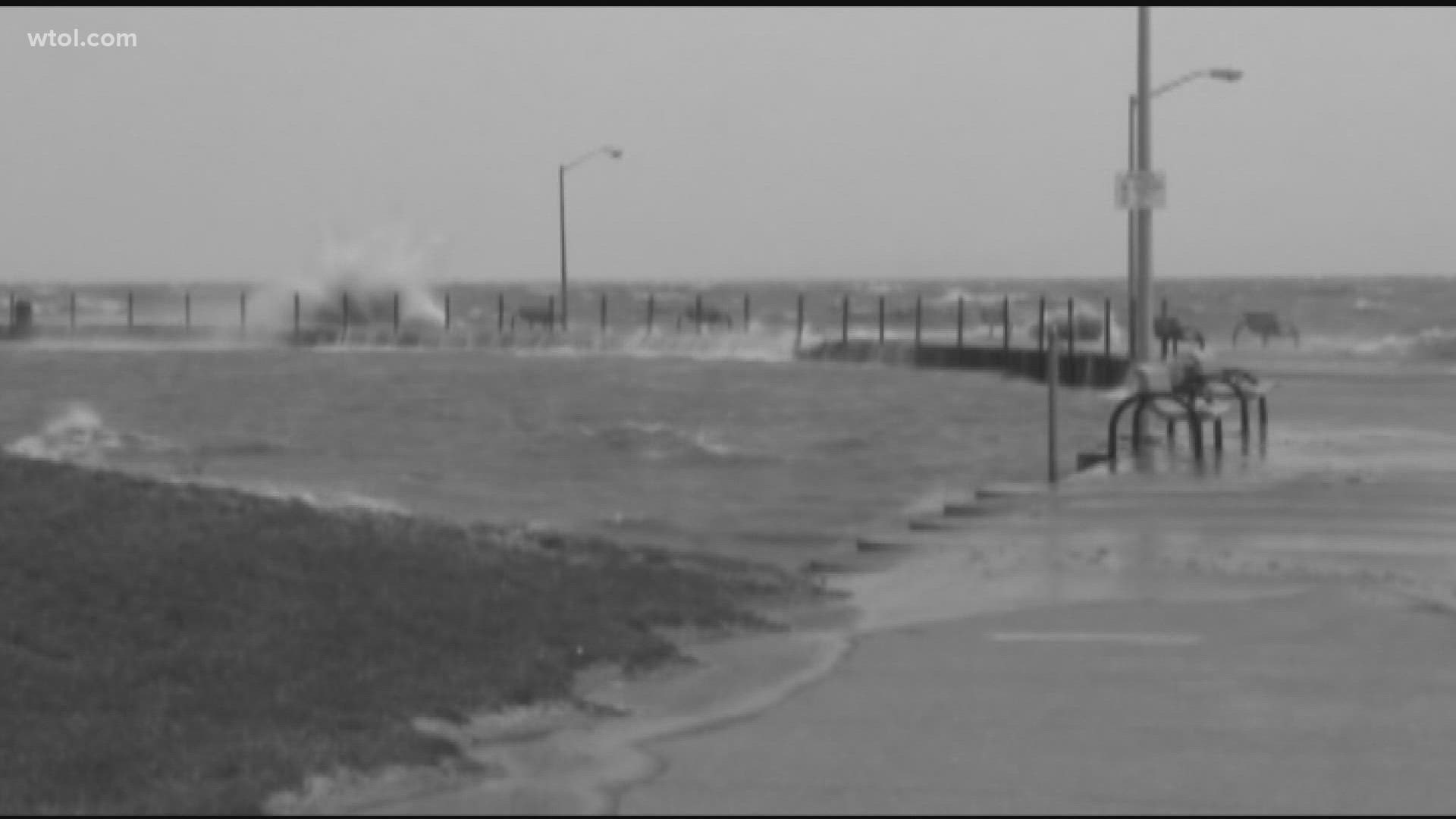TOLEDO, Ohio — A fuse lit by the sweltering summer heat, capable of creating a storm longer-lasting and perhaps more destructive than a tornado. It’s called a derecho. It’s a windstorm driven by large clusters of explosive thunderstorms, typically organized into large squall lines with intense bow echos which drive damaging straight-line winds.
These massive storms can be several hundred miles wide, track for up to 12 hours and cover hundreds, if not thousands, of miles.
Most common in the Central Plains and Midwest, we can average up to one derecho per year. The majority of these storms strike in May, June and July, but can happen year-round. Nearly 10 years ago, parts of our area were devastated by a derecho on June 29, 2012.
Sizzling summer heat fueled the eruption of a massive complex of storms that roared into our area on the afternoon of June 29. The storm produced straight-line winds of up to 90 mph, lasting several minutes. It began in Illinois and within hours barreled across the heartland leaving a trail of destruction over 1,000 miles long and 5 million customers across nearly a dozen states without power.
Many were left shocked and in despair, sweltering in triple-digit heat that followed. Communities in northwest Ohio without power for days and weeks after the derecho in June 2012. Nearly $3 billion in damage was caused by this single storm.
One of Ohio’s costliest and deadliest natural disasters came from a sudden derecho on the Fourth of July, 1969. It struck with little to no warning and became known as the Ohio Fireworks Derecho.
Shortly after 8 p.m., a cluster of storms developed into a derecho in southern Michigan. The storm hit Toledo with wind gusts measured to 104 mph – toppling an estimated 5,000 trees in just minutes.
Adjacent lakeshore areas from Toledo to Cleveland were hit even harder.
Those looking to celebrate the July 4th holiday on the lake were unexpectedly caught in the crosshairs of a mammoth storm. Over 100 boats on Lake Erie capsized, dozens drowned.
Over 40 fatalities total and $65 million in damages made this one of Ohio’s costliest natural disasters at the time.
The agricultural impacts can be devastating. In August 2020, a massive derecho in Iowa packed winds over 120 mph. An estimated 5 million acres of corn and soybeans flattened. From Iowa to western Ohio, total damages of $11 billion dollars made this the costliest thunderstorm complex in U.S. history.
The pure size and frequency make it far more likely you will experience high straight-line winds from a derecho compared to a tornado.
We want to keep you safe and prepared.
Here are a few items you should have in your severe weather preparedness kit, as recommended by the National Weather Service:
- Backpack or storage tub to hold your supplies
- Bottled Water
- 1 gallon per person is recommended
- Non-perishable food
- If including canned foods, you must include a can opener
- Flashlight with extra batteries
- First aid supplies
- Bandages
- Ointment
- Disinfectant wipes
- Tissues
- Toilet paper and bags with ties for personal sanitation
- Paper and pen or pencil (to take notes, play games, etc)
- Sleeping bag or warm blanket (recommend one for each person in your home)
- Wrench or pliers to turn off utilities
- Personal hygiene items (travel size deodorant, cotton swabs, feminine items, etc)
- Whistle to signal for help
- Important documents (identification, insurance information, banking information, wills, etc)
- Emergency reference materials such as a first aid book
- Battery-powered radio and a NOAA weather radio
- Formula and diapers (if there is an infant in the house)
- Extra pet food (if there are pets in the house)
- Dust mask or cotton t-shirt, to help filter the air
- Plastic sheeting and duct tape to shelter-in-place
- Can opener for food (if kit contains canned food)
- Cups and utensils
- A change of clothes for each person in your home (if you live in a cooler climate make sure the clothes are warm!)
- Also include a jacket, hat, gloves and closed-toe shoes for walking (boots or sturdy sneakers are best)
- Rain gear
- Cash
- Paper towels
- Fire extinguisher
- Cards or game (it is important to have something to do to take your mind off the situation for a few moments or alleviate stress if you will be in your shelter for an extended time)
For more information and activities to help your family prepare, check out the National Weather Service's website.
More on WTOL:

